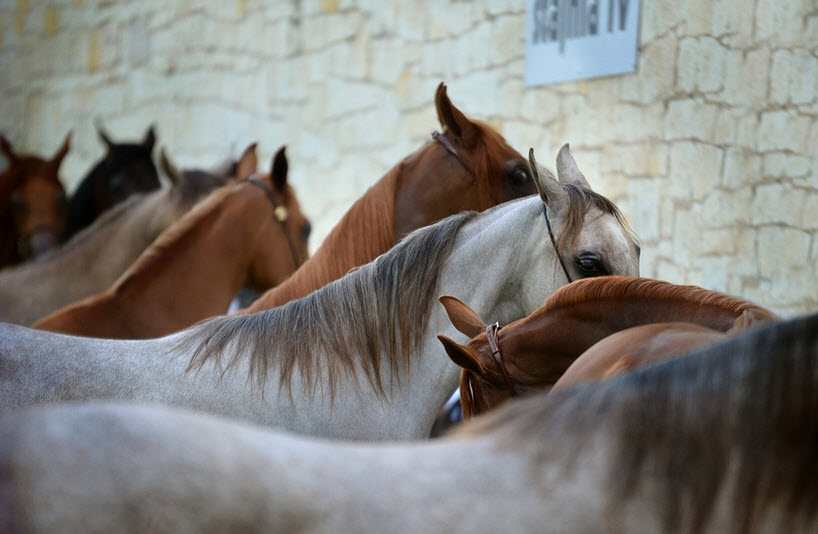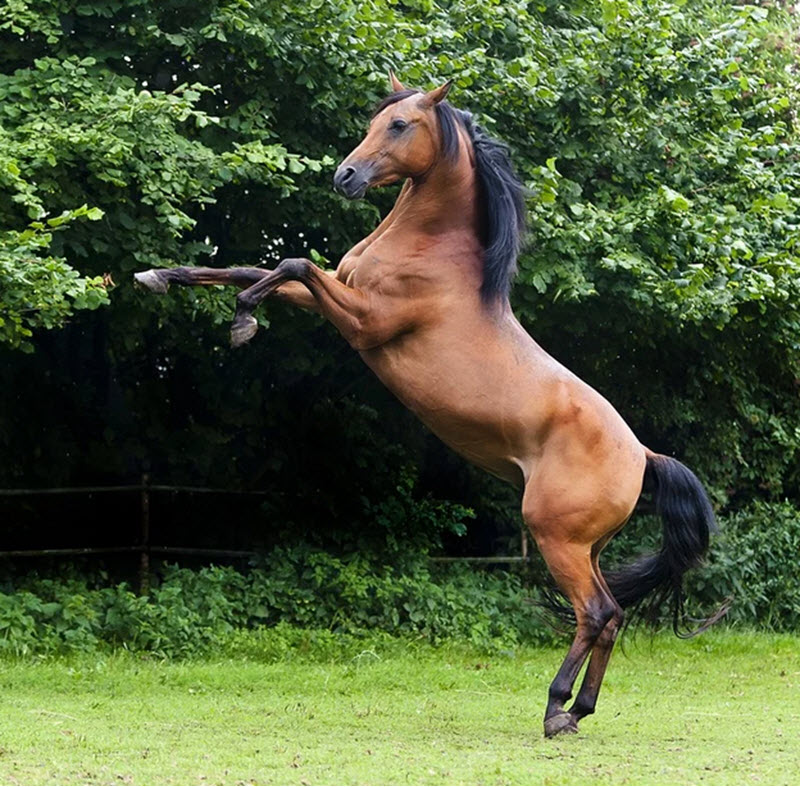Contents
The Arab horse is easily recognized on its distinctive head shape and high tail carriage. As the name suggests, the Arabian – also known as the Arab horse – come from the Arabian Peninsula. It is one of the oldest extant horse breeds and has been around for several thousand years. The oldest remains of Arabian-looking horses investigated by archaeologists in the Middle East are dated to roughly 4,500 years ago.
The Arab horse developed in the harsh and arid conditions of the Arabian world and many of these horses feature a jibbah – a slight bulge on the forehead that indicates extra sinus space. This enlarged sinus space is believed to help the horse cope with the dry desert environment.
Because of their remarkable speed, endurance and strong bones, the Arab horses have been heavily utilized in the creation or improvement of other horse breeds around the world.

Uses
Arabians are known for speed, endurance and strong bones. They horses dominate the endurance riding discipline, and are also utilized in many other equestrian sports.
The Arabian horse, which is rather light-weight, is not a common choice for jobs suitable for heavy horses, such as ploughing and pulling high-weight loads.
Even though the Arabian is a light-weight horse, it can carry surprisingly heavy riders.
The Arabian horse has long been a status symbol and is a common gift among the rich and noble on the Arabian peninsula. Having high quality Arabian horses show that you are not just a trader that has gotten lucky in the CFD market or stock market. It shows that you are a man of means and importance. A man of importance.
Is it a horse or a pony?
According to the Arabian horse breed standard established by the U.S. Equestrian Federation, an Arabian horse stands between 14.1 and 15.1 hands, with occasional individuals under or over.
14.2 hands is the generally accepted cutoff height between pony and horse, but all Arabians are considered horses – even individuals smaller than 14.2 hands.
Temperament
A typical Arabian horse is alert, sensitive, intelligent and spirited. Just like the thoroughbred and the barb horse, it is known to be “hot blooded”.
Their intelligence is, of course, a double-edged sword for us humans. It makes them easy to train, but they will also quickly figure out how to get what they want.
The Arab horse was developed by desert-living nomads. It was quite common to keep the horse inside the tent rather than outside, to protect it from the environment and from being stolen. Especially mares were likely to live inside. Because of this, the Arab horses – especially the mares – had to be gentle and capable of living in very close proximity to a whole family, including small children. This feature of their temperament is still noticeable today. In the United States, the Equestrian Federation allows children to exhibit Arab stallions in show ring classes – a testament to how safe these horses are. (For most other breeds, children are not allowed to exhibit stallions.)

Physical characteristics
A typical Arabian body will be compact with a short broad back and a level (and fairly long) croup. The shoulder is well laid-back and the hip is both deep and well-angled. The horse carries its tail high.
Head
- The head of an Arabian horse is refined and wedge-shaped, with a broad forehead and small muzzle. Most Arabians have a concave profile.
- The eyes and nostrils are large.
- Many (but not all) Arabians features a jibbah; a slight bulge between the eyes. The jibbah is indicative of the horse having extra sinus capacity, and this is believed to make the horse better suited for a dry desert climate.
Neck & Throat
- Arched neck.
- Large and well-set windpipe.
- Refined and clean throatlatch.
- A long mitbah is highly desirable since it adds flexibility to the brindle and provides lots of room for the windpipe. (Mitbah is the structure of the poll and throatlatch.)
Skeleton
Most Arabians feature dense, strong bones. They are renowned for their excellent hoof walls and sound feet.
The high bone density of the Arabian helps make it strong. These horses might look small and dainty, but looks can definitely be deceiving.
Most Arabians have 5 lumbar vertebrae and 18 pairs of ribs, which is the norm for horses. However, it is not that unusual for Arabs to instead have just 5 lumbar vertebrae and 17 pairs of ribs.
Muscles
There is quite a lot of variation within the breed as far as muscling goes.
- Some Arabs feature especially powerful muscling. They are sought after for reining and other activities that require intense bursts of power rather than endurance.
- Other Arabs come with leaner muscling, typically combined with narrower hindquarters. They are sought after for endurance activities.
